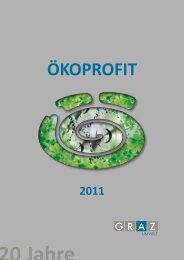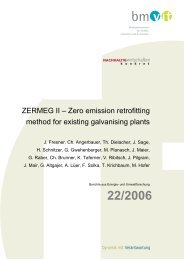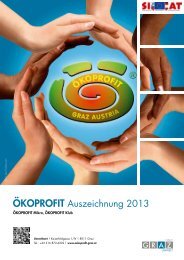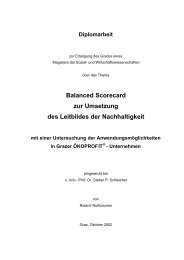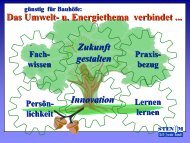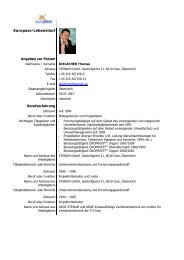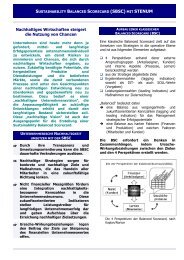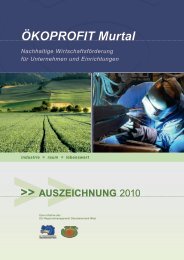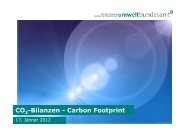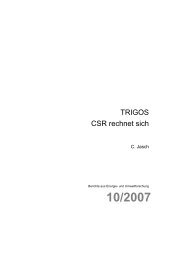Promoting Resource Efficiency in Small & Medium size ... - UNEP
Promoting Resource Efficiency in Small & Medium size ... - UNEP
Promoting Resource Efficiency in Small & Medium size ... - UNEP
Create successful ePaper yourself
Turn your PDF publications into a flip-book with our unique Google optimized e-Paper software.
Development of copper consumption<br />
The qualities of copper that have made it the material of choice for a<br />
variety of domestic, <strong>in</strong>dustrial and high-technology applications have<br />
also resulted <strong>in</strong> a steady rise <strong>in</strong> global copper consumption. Studies<br />
of copper consumption from the U.S. Geological Survey (USGS)<br />
show some <strong>in</strong>terest<strong>in</strong>g trends between 1980 and 2008. Copper<br />
consumption <strong>in</strong> emerg<strong>in</strong>g economies, such as Ch<strong>in</strong>a and India,<br />
rose considerably, whereas the consumption rate <strong>in</strong> <strong>in</strong>dustrialised<br />
economies, such as the United States, fell slightly. Until 2002, the<br />
United States was the lead<strong>in</strong>g copper consumer and annually used<br />
about 16% of total world ref<strong>in</strong>ed copper (about 2.4 million tonnes). In<br />
2002, the United States was overtaken by Ch<strong>in</strong>a as the world’s lead<strong>in</strong>g<br />
user of ref<strong>in</strong>ed copper. The boom<strong>in</strong>g economy <strong>in</strong> Ch<strong>in</strong>a contributed<br />
to a tripl<strong>in</strong>g of its annual ref<strong>in</strong>ed copper consumption dur<strong>in</strong>g the 8<br />
years from 1999 to 2007. Data for 2008 are estimates based on data<br />
for three-quarters of the year. 49<br />
For a better understand<strong>in</strong>g of material flows, there are different<br />
methods for measur<strong>in</strong>g material flows <strong>in</strong> an <strong>in</strong>dustry. With these<br />
methods it is easier to localise sources of dissipation and def<strong>in</strong>e<br />
60<br />
50<br />
40<br />
30<br />
Biomass<br />
Ind. & Const. M<strong>in</strong>erals<br />
Metals<br />
Fossill Fuels<br />
20<br />
10<br />
0<br />
1980 1985 1990 1995 2000 2005<br />
Figure 35: Global use of resources<br />
Region 2000 2001 2002 2003 2004 2005 2006 2007 2008<br />
European Union 25 160.0 156.5 156.7 154.4 162.1 164.1 167.0 167.3 166.5<br />
European Union 15 132.6 129.5 127.4 137.4 144.1 145.4 146.9 146.9 146.2<br />
Other Europe 22.1 20.6 20.7 24.1 26.0 27.0 28.0 29.7 30.5<br />
Former USSR 38.8 41.2 38.3 43.4 47.0 50.0 52.0 53.5 55.0<br />
NAFTA 149.2 132.1 135.1 132.9 152.5 153.5 157.5 157.5 155.5<br />
S America 28.1 28.4 27.4 28.1 31.5 32.3 34.5 35.5 38.5<br />
Africa 15.0 16.3 17.4 17.1 17.5 18.0 18.5 19.0 19.0<br />
Middle East 18.4 19.1 20.9 21.6 23.5 25.0 26.5 27.5 28.5<br />
PR Ch<strong>in</strong>a 124.6 153.4 185.6 230.8 257.4 291.4 302.0 310.0 322.0<br />
Other Asia 119.5 118.9 129.5 133.3 141.0 143.5 145.7 147.0 149.2<br />
Oceania 6.4 6.3 7.1 7.5 7.5 8.0 8.0 8.5 8.5<br />
World TOTAL 758.2 766.0 810.4 867.0 941.5 989.5 1016.5 1032.5 1048.0<br />
Table 14: Summary of apparent consumption of f<strong>in</strong>ished steel 2000-2008 (<strong>in</strong> million tonnes) 48<br />
48) OECD, Recent Steel Market Developments, 2004.<br />
49) USGS, Copper – a Metal for the Ages, 2009<br />
56




